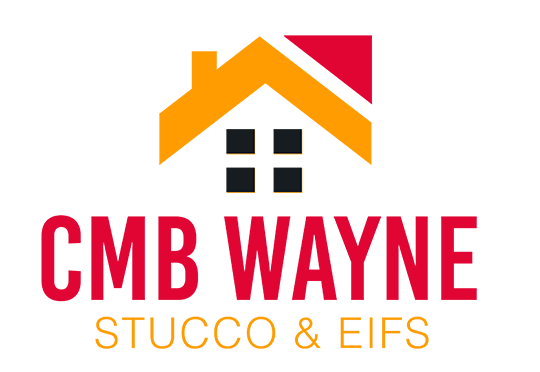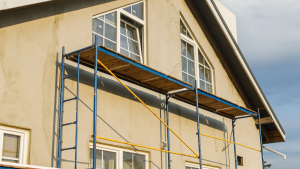There are many stuccos on the market, and selecting the right one for your house might be challenging.
This article was written to help you understand the various types of stucco well enough can use that information to make an educated choice about which option will serve you and your needs the very best.
What is Stucco?
Plaster made of cement, known as stucco, has been put to use Throughout thousands of years as a construction material, and it is still utilized for that purpose today. In a great number of locations over the globe, it has been used in some capacity or another, and in Clifton, New Jersey, it is a fairly common building material.
Many people have the misconception that stucco refers to only one material. Still, in reality, it’s more of an umbrella phrase that encompasses a variety of distinct materials that all adhere to the same fundamentals of construction.
The picture on the left depicts a standard three-coat stucco method used in Clifton, New Jersey, nowadays. The “hard coats” in the technique are the base coatings, two grey materials.
Stucco is produced by combining Portland cement, sand, and water. Once the mixture is ready, it may be applied to a wall or another surface to create a sturdy exterior for a house. It is meant to protect the building from the outside elements and keep the building insulation in place, and it may be applied to the substrate you are working with either by spraying it on or trowelling it on.
Stucco is known as a “hard coat” because it is typically made with a “hard coat” base, which is Portland cement. This is also where the term “hard coat” comes from. This is the “hard coat” used in stucco systems the vast majority of the time, and it is what gives the stucco its nickname of “hard coat.” In Clifton, New Jersey, stucco made of Portland cement is typically used.
EIFS (Exterior Insulation Finishing System–
The cladding material on the outside of the building has a stucco finish such as this Exterior Insulation and Finish Systems, sometimes known as EIFS, wasdeveloped in the 1960s and 1970s as a retrofit to brick walls in the decades following World War II. The acronym EIFS stands for Exterior Insulation and Finish Systems. Its widespread application to the conservation of heating and cooling energy in the 1970s contributed to the growing popularity of the practice.
What is EIFS?
EIFS, which stands for Exterior Insulation Finishing Systems, is a synthetic stucco system used to finish a house’s exterior. The method is widely adopted across Europe, and its application in the United States and Canada dates back to the late 1970s. The EIFS system utilizes a synthetic stucco that is layered for reinforcement. There are two primary varieties of EIFS, namely, the one-coat and the three-coat varieties. The one-coat is a single layer that does not have a base or finish coat and is typically based on polyurethane. The three-coat system is the more traditional method of applying stucco. It consists of a base coat, a scratch coat, and a brown coat.
On the outside of the house, a barrier that is water-resistant will be installed. Synthetic material is often used for the construction of water-resistant obstacles. If the water-resistant barrier is placed correctly, it will provide a vapor barrier that will stop moisture from entering the house. This will keep the home from becoming damp.
The EIFS system is a more energy-efficient alternative than the conventional stucco application. Copper, aluminum, wood, and vinyl are all more expensive than this material, which makes it an attractive choice. A synthetic stucco is an excellent option for use in regions characterized by strong winds and severe weather conditions. In contrast to typical stucco, it is not subject to damage from exposure to the outside environment.
EIFS, or external insulation and finish system, is a material that does not burn and is resistant to fire. The fire-resistant qualities make EIFS an excellent material to employ in dwellings where fire resistance is crucial.
EIFS Advantages
EIFS is a product that has a very high energy efficiency rating, in addition to having various additional benefits. It is a more economical option than conventional stucco, given its ability to be erected in a shorter amount of time. It is also an excellent choice for places where wind and rain are likely to happen. For example, exterior insulation and finishing systems (EIFS) perform well in coastal regions. EIFS is an excellent option for usage in places prone to severe rain since, compared to typical stucco, it has a lower water permeability rate. Additionally, the material can withstand both freezing and thawing without being damaged.
EIFS is a product built to endure and has a lifespan of up to 50 years. It can withstand extreme climatic conditions and a wide variety of different sorts of environmental factors, such as rain, hail, snow, and sun. There are situations in which EIFS may help insulate a house from the heat that the sun generates. Because it can withstand the effects of the weather, it will last for a long time. Additionally, the product has a high resistance to fire.
Because it is so simple to maintain EIFS, it may also be painted over, and pressure washed.


